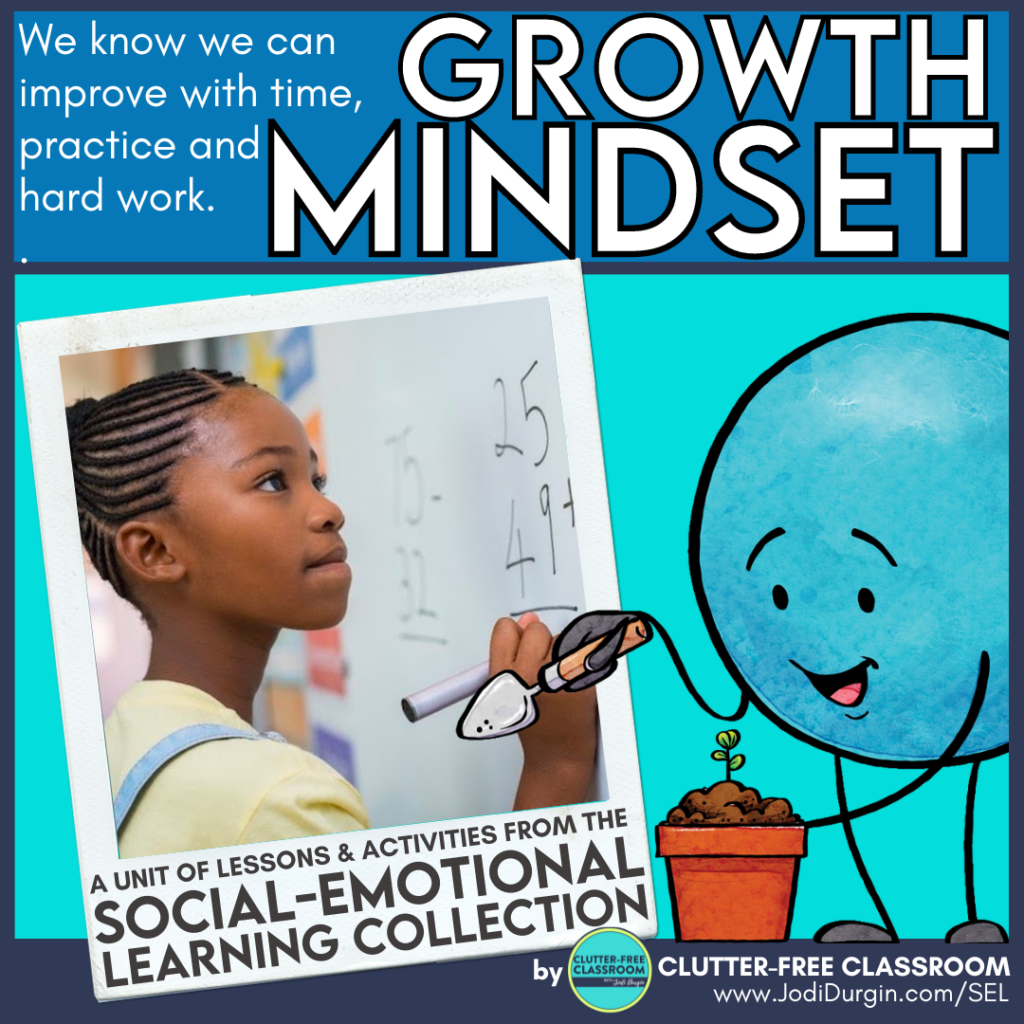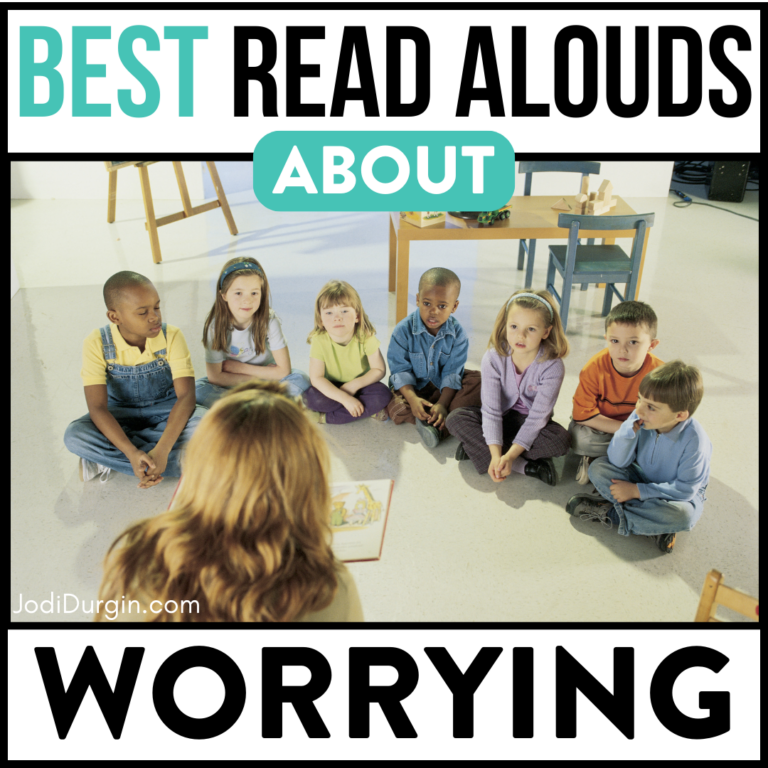Do you ever hear your students say, “This is too hard!” or “I can’t do this!”? Perhaps you have heard some of them say, “I am terrible at math!” or “I will never be good at math!” These students, along with the rest of your students, need to be explicitly taught strategies that fall under the framework of growth mindset. But, how do we do that? You can find the answer here! This post shares how to promote growth mindset in your elementary classroom.
Read below to learn what growth mindset is, the difference between a fixed mindset and a growth mindset, why it is important, how to promote growth mindset in your classroom, children’s literature that teaches it, and specific information related to growth mindset in math. You’ll also find these growth mindset activities helpful!

What is a Growth Mindset?
The concept of a growth mindset was developed by psychologist Carol Dweck in her book Mindset: The New Psychology of Success. According to Dweck, “A mindset is a self-perception or self-theory people feel about themselves.”
Fixed Mindset vs. Growth Mindset
People with a fixed mindset believe their qualities are fixed traits and believe talent creates success without effort. Those who have a fixed mindset and fail at something often feel they can’t successfully complete their task because improvement of in-built qualities is not possible. People with a growth mindset, on the other hand, believe their basic abilities can be developed through persistence and effort and that brains, and talent, are merely a starting point. These people embrace learning and do not fear failure.
Why is it Important to Teach Growth Mindset?
- Leads to future academic, professional, and personal success.
- Increases a person’s ability to accept feedback and improve.
- Strengthens a person’s ability to overcome problems and setbacks.
- Improves self-esteem and confidence.
- Contributes to a more positive outlook.
- Increases a person’s willingness to try something new and/or challenging.
15 Ways to Promote Growth Mindset in Your Classroom
Below are 15 ways for how to promote growth mindset in your elementary classroom:
- Conduct class discussions about growth mindset.
- Offer opportunities to work with inspirational quotes.
- Invite students to reflect through writing prompts.
- Read aloud children’s literature that lends itself to growth mindset.
- Create an anchor chart with students about what growth mindset looks like and sounds like.
- Watch videos about growth mindset.
- Design a bulletin board about growth mindset.
- Explicitly teach that we all learn from our mistakes because mistakes help us learn.
- Let them know you do not expect them to be perfect.
- Share examples of mistakes you have made. Let them know what consequences you faced. Most importantly, explain the lesson you learned. In addition, own up to mistakes as you make them in real time.
- Mentor them on ways to apologize if a mistake has hurt someone and help them find ways to make it better.
- Encourage them to take ownership for their mistakes. Explain why blaming others does not help the situation.
- Focus only on the mistake at hand. Bringing up past mistakes will not help.
- Praise them when they admit to making a mistake.
- Emphasize that you love them unconditionally and that the mistakes they make will never change that fact.
Ideas for Incorporating a Growth Mindset in Math
- Create an anchor chart with students about what growth mindset looks like and sounds like specifically in math.
- Explain your thinking and reasoning aloud while you model how to solve problems. Highlight growth mindset language during this time.
- Provide many opportunities for students to work together to solve a challenging problem. Support students in using growth mindset language.
- Invite students to reflect on how they used mindset when solving a problem through a class discussion format or journaling format.
- Offer opportunities for students to engage in a productive struggle. Number talks and math logic puzzles are a great way to do this.
In closing, we hope you found this post about how to promote a growth mindset in your classroom helpful! If you did, then you may also be interested in our Growth Mindset SEL Unit!






